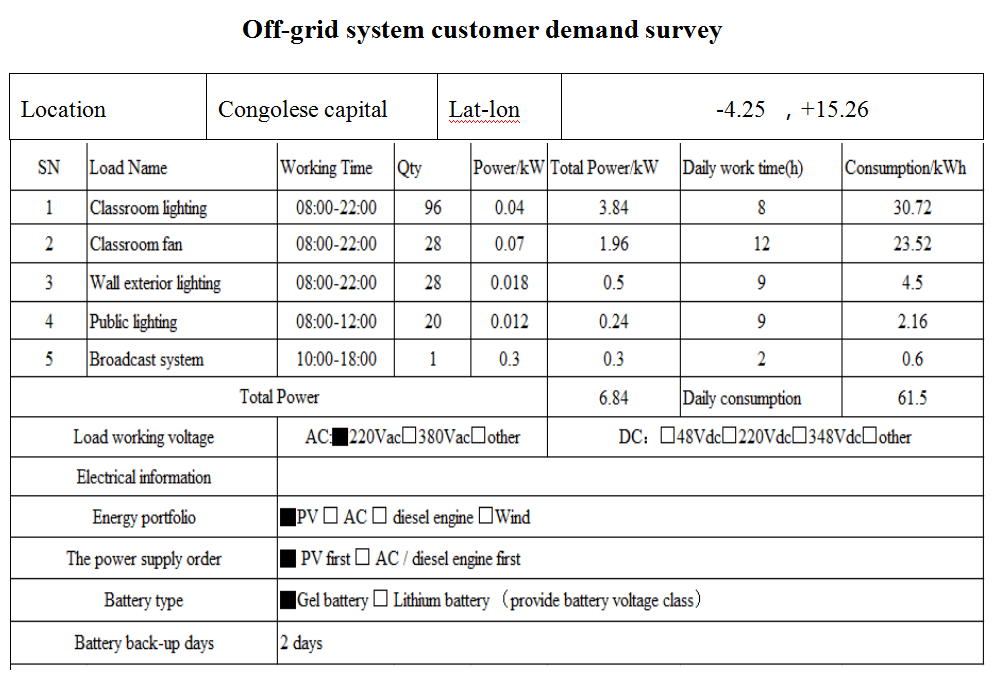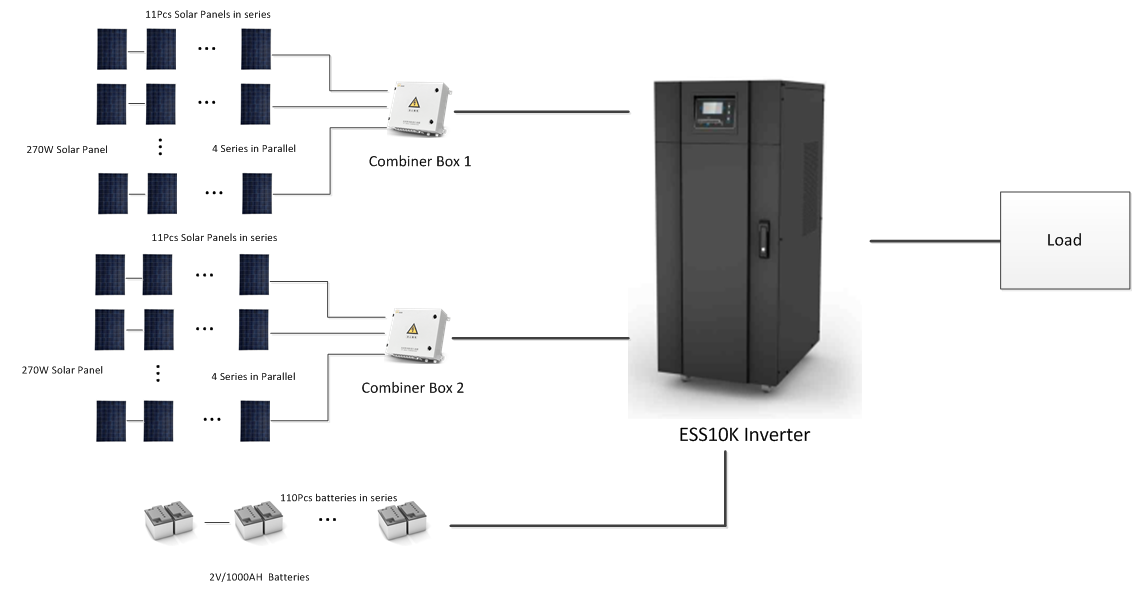Typical off-grid system design
There are still a large number of people living in a world without electricity or less electricity supply. They live in poverty or remote areas, far away from public power grid. Because there is no electricity, they can’t enjoy the information and convenience that modern civilization brings to life. PV off-grid power generation system is an independent and self-sufficient renewable new energy supply system that can solve their basic electricity problems.
The typical PV off-grid power generation system is mainly composed of solar panel, solar MPPT controllers, off-grid inverters, storage batteries, distribution boxes etc. After the PV modules are connected to the solar controller, will meet the load needs firstly, and then the excess power will be stored in the battery for night and rainy days use. When the battery is empty, most of inverters can also support the AC input (or diesel generator) as a supplementary energy source for the load .

The design of the PV off-grid system is different from the grid-connected system. It needs to consider the user's load power size, daily power consumption, installation site climatic conditions and other factors. Selecting different design schemes according to the actual needs of customers, which is relatively complicated. In order to ensure off-grid system works reliably, it is necessary to do a preliminary survey of customer needs. The design of the PV off-grid system mainly includes the selection of the inverter, the design of the solar module capacity and the battery capacity:
Inverter selection: According to user load power size and type to choose inverter power.
The inverter power size is generally not less than the total load power. Considering the service life of the inverter and subsequent expansion, We suggest leave a certain margin according to the inverter power, generally 1.2~1.5 times of the load power. In addition, if the user load contains an inductive equipment such as refrigerator, air conditioner, water pump, range hood etc. (the starting power of the motor is 3 to 5 times of its rated power), the starting power of the load needs to be taken into account, that means the starting power of the load should be less than the maximum output power of the inverter. The following is a calculation formula for the power selection of the inverter, which is used for design reference only.

(Margin coefficient generally is 1.2~1.5. inductive load should consider its impact power)
Solar module capacity calculation: solar module capacity is basically determined by user’s daily electricity consumption and light intensity.
Part of the electricity generated by the PV modules during the day is supplied to the load, and the rest is used to charge the battery. At night or when the solar radiation is insufficient, the electricity stored in the battery will be discharged to power the load. Obviously, on the condition of no utility power or diesel generator as a supplementary energy source, the power consumed by the load is all from the electricity generated by the PV modules during the day. Considering different seasons, the light intensity vary from region to region. In order to ensure the reliable operation of the system, the capacity of PV panels should be designed to meet user demand in the worst lighting season. The following is the formula for calculating the capacity of photovoltaic panels.

Battery capacity calculation: Battery capacity is determined by night power consumption or backup time.
The battery of the PV off-grid system is mainly used for energy storage, ensure that the load can work normally when the solar radiation is insufficient. For PV off grid systems with significant loads, battery capacity design requires to consider the longest rainy days in the area. The requirement of ordinary PV off-grid system load power supply is not high, considering the system cost reasons, you don’t need to consider the number of rainy days, just according to the actual light intensity to adjust the use of the load. In addition, most of the PV off-grid system use lead-acid batteries, generally the discharge depth is 0.5-0.7. The design of battery capacity can refer to the following formula:
10kVA typical off-grid system design
Background:Designing a photovoltaic off-grid system for a school in the Congolese capital to meet its daily electricity needsProject demand surveyIn the early stage of the design plan, you need to do a good customer demand survey (load information should be accurate), as follows:

Customer loads are mainly used for classroom lighting, classroom fan, public lighting, wall exterior lighting and broadcast system etc. The total load power is 6.84kW, inverter chosen not less than 9.8kVA. In this case, JFY ESS10K, output power of 10kVA, is a reasonable off-grid inverter model.
Panel capacity calculation
As the customer demand survey suggest the average daily electricity consumption of the school is about 61.5kWh, and the local lighting conditions are great. According to the local solar radiation data shows, the average sunshine time is 4.23h/day. The panel configuration is 1.1 times margin, and the design uses 88 pcs 270W polycrystalline panels. The total power of the PV module is 23.76kW, and the average power generation is 100.5kwh per day. Considering the system efficiency, generally it is 0.8, so the available electricity is 80kwh per day.
Battery capacity calculation
Most of the school's lighting is used at night. Considering the battery life, the battery capacity should be increased appropriately. The battery backup time required by the customer is 2 days, and the battery discharge depth is 0.7. The project uses 110 pcs 2V /1000AH Gel battery in series. The total capacity is 220,000VAH, and the available power is about 154kwh, which can meet the power demand of 2 days backup time.
System diagram







